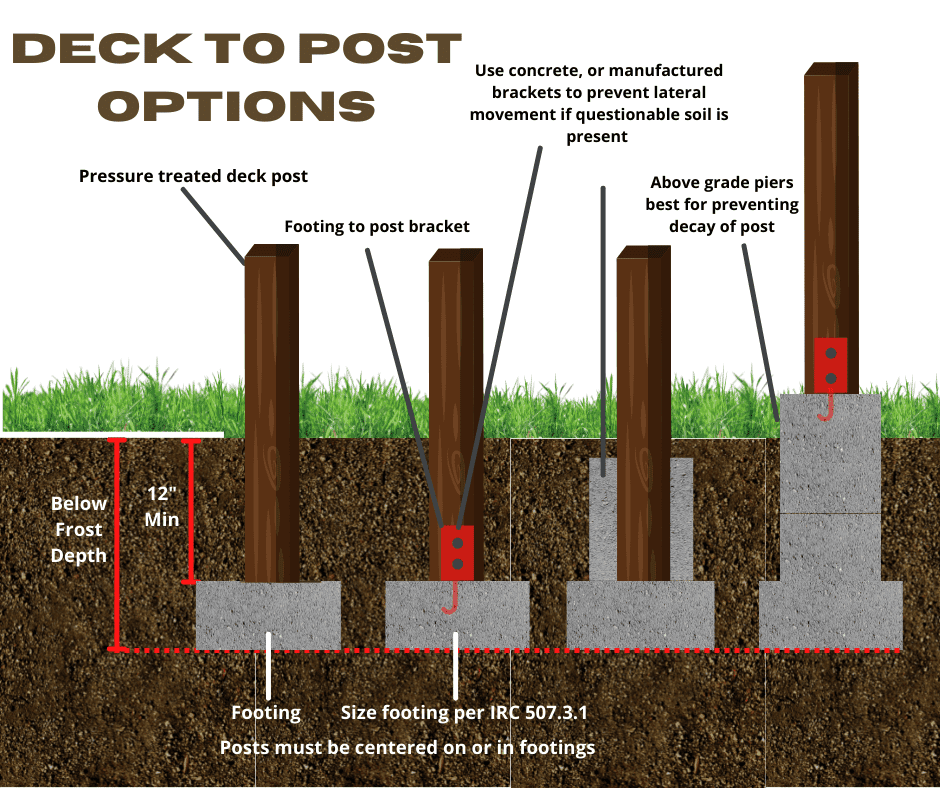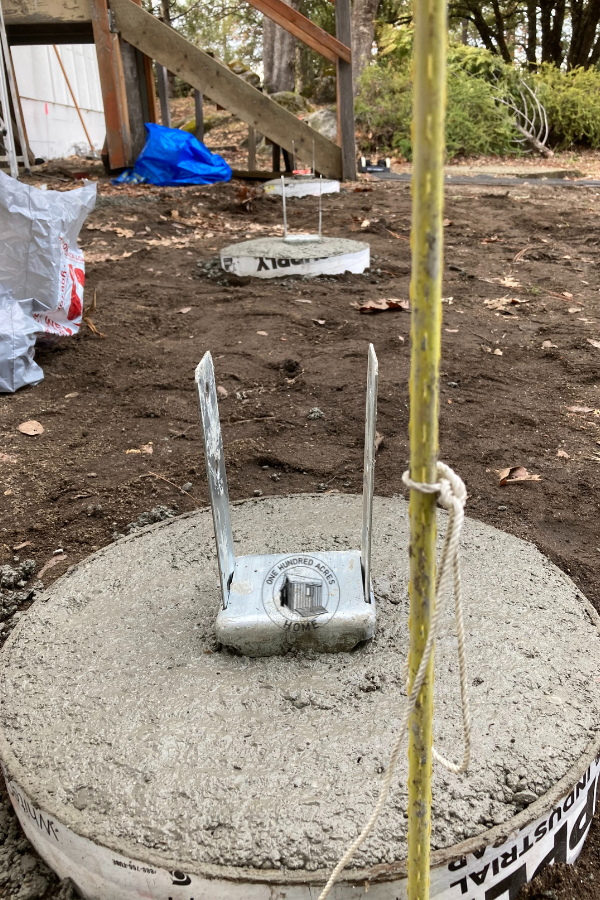Deck Footings 101: Browsing the Basics for a Steady and Long Lasting Deck
Deck Footings 101: Browsing the Basics for a Steady and Long Lasting Deck
Blog Article
Expert Tips for Putting Up Deck Footings to Support Your Outdoor Area
When it concerns constructing a deck, one of one of the most crucial components to take into consideration is the installation of appropriate grounds. These grounds are the structure whereupon your outdoor space will certainly rest, giving security and support for years ahead. What exactly does it take to set up deck footings properly? In this conversation, we will certainly check out professional suggestions and methods that can aid guarantee a long lasting and effective deck installment. From picking the appropriate kind of footings to avoiding common blunders, we will supply you with the knowledge and understandings you require to with confidence embark on your deck-building trip. Let's dive right in and find the key to a durable and solid outdoor room.
Relevance of Proper Deck Footings
Appropriate deck footings are essential for ensuring the security and durability of your outdoor area. When constructing a deck, it is critical to take notice of the foundation on which it will certainly rest. Deck grounds provide the needed support for the entire structure and aid distribute the weight evenly - Deck Footings. Without strong and correctly installed grounds, your deck might come to be unpredictable, leading to security dangers and costly fixings.

In enhancement to stability, appropriate deck grounds also contribute to the longevity of your outdoor room (Deck Footings). Grounds that are created and created to endure the components and soil conditions in your location will certainly aid prevent the deck from shifting or clearing up over time. By ensuring the grounds are properly sized and installed, you can decrease the risk of damage to the deck structure, extending its life-span and reducing the requirement for costly fixings or replacements

Choosing the Right Type of Grounds
When choosing the appropriate kind of grounds for your deck, it is necessary to consider factors such as dirt problems, regional building ordinance, and the overall layout of your outside area. The sort of footing you choose will play an essential role in guaranteeing the security and durability of your deck.
One typical type of ground is the concrete footing. Concrete grounds are appropriate for the majority of dirt conditions and give superb assistance for decks.
In many cases, you might need to use specialized grounds, such as stack footings or deep foundations, if you are constructing a big or multi-level deck. These footings are made to distribute the weight of the deck over a bigger area, guaranteeing security and avoiding resolving or sinking.
Before picking a sort of footing, it is important to consult regional building ordinance and laws to make certain conformity. Furthermore, think about the style and intended use your exterior room. Aspects such as the dimension, shape, and load-bearing needs of your deck will certainly influence the kind of footing that is most appropriate.
Preparing the Ground for Footing Installment
To effectively prepare the ground for footing installment, it is vital to examine the soil conditions and take required actions to ensure stability and toughness of the deck. The first step is to excavate the area where the footings will be set up.
Once the area has been dug deep into, the following step is to compact the dirt. This can be done making use of a plate compactor or by using a hand meddle. Compacting the dirt aids to remove any spaces or air pockets, which can result in resolving and instability gradually.
After compacting the soil, it is necessary to lay a layer of crushed rock or smashed rock at the base of the excavation. This will offer water drainage and help to avoid water from pooling around the footings, which can lead to disintegration and instability.
Step-by-Step Overview to Installing Deck Footings
After appropriately preparing the ground for footing installment, the next step is to start the procedure of setting up deck grounds. This detailed guide will supply you with a clear understanding of just how to install deck footings for your outdoor area.
Figure out the place: Begin by noting the placements of the deck footings utilizing stakes and string. Ensure that the locations align with the layout and format Learn More Here of your deck.
Dig the holes: Use an article hole digger or an auger to dig the openings for the footings. The depth and diameter of the openings need to remain in accordance with regional structure codes and the particular requirements of your deck style.
Degree the holes: Use a level to make certain that the openings are dug to the appropriate deepness and are level with each various other. (Deck Footings)
Add gravel: Location a layer of crushed rock at the base of each hole to boost drain and protect against the wood from deteriorating.
Insert the grounds: Put the footings right into the holes, making certain they are degree and plumb. Make use of a level and a determining tape to guarantee precision.
Protect the footings: Pour concrete into the holes around the grounds, filling them to the top. Utilize an article level to make sure the footings continue to be level as the concrete sets.
Allow time for healing: Allow the concrete remedy according to the manufacturer's guidelines before waging the deck building and construction.
Usual Mistakes to Stay Clear Of During Footing Setup
One crucial facet to think about during the installation of deck footings is avoiding usual mistakes that can endanger the stability and durability of your outside area. While deck grounds might feel like a easy and straightforward part of the building procedure, ignoring specific variables can cause costly repairs and potential security hazards down the line.

Additionally, neglecting to install proper drain actions can create click this site water to collect around the grounds, bring about rot, degeneration, and the ultimate weakening of the deck's structure. Moreover, using the wrong kind of footing product or stopping working to sufficiently protect the footings can compromise their structural stability.
To avoid these blunders, it is necessary to seek advice from an expert or follow sector guidelines to make sure correct footing installment. By doing so, you can make sure the security and longevity of your outdoor space, providing a satisfying and secure environment for years to find.
Final Thought
In conclusion, setting up appropriate deck footings is essential for the stability and long life of your outside space. By picking the ideal sort of footings and sufficiently preparing the ground, you can make sure a solid foundation for your deck. Following a step-by-step guide and avoiding common mistakes during footing installment will my response further improve the longevity and security of your deck.
Proper deck grounds are essential for making sure the stability and durability of your exterior room. The footings serve as a connection between the ground and the deck, enabling the weight of the deck and its passengers to be distributed equally right into the dirt.One common type of footing is the concrete ground. Insert the footings: Put the grounds right into the openings, making certain they are level and plumb. Protect the grounds: Pour concrete into the holes around the footings, loading them to the top.
Report this page